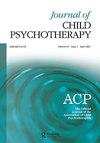Working with trauma; finding new ports of entry
IF 0.8
Q4 PSYCHOLOGY, CLINICAL
引用次数: 0
Abstract
ABSTRACT This paper describes how, in the wake of a spate of fatal knife crime in one London borough, the council, Clinical Commissioning Group (CCG) and Child and Adolescent Mental Health Service (CAMHS) got together to think about how to improve outcomes for their young people. Starting with schools and pupil referral units, the CAMHS and educational psychology service were commissioned to work with whole staff groups, from senior leadership to lunchtime monitors and playground staff, to embed trauma informed policy and practice. The aim was to spread understanding about complex developmental trauma; what it is, how it affects the behaviour and experience of children and families, and how to work with it. Given how widespread trauma is, the objective was also to think about what might need to change in the environment and ethos of the borough’s schools as a result. Following the project’s initial success, its scope and remit were expanded to support services on a policy level, while also working with their staff to think about the impact of trauma, and how best to support children and families who have been affected by it. As well as teaching about trauma, the project is primarily an experiential one. This paper explores the impact on staff who were involved in the project; what came out of it for them personally in terms of changes to their thinking and outlook, and what they saw as the changes for the children and families they worked with.处理创伤;寻找新的入境口岸
摘要本文描述了在伦敦一个行政区发生了一系列致命的持刀犯罪事件后,委员会、临床调试小组(CCG)和儿童青少年心理健康服务中心(CAMHS)如何共同思考如何改善年轻人的健康状况。从学校和学生转介单位开始,CAMHS和教育心理学服务机构被委托与全体员工团体合作,从高级领导到午餐时间监督员和操场工作人员,以嵌入创伤知情政策和实践。目的是传播对复杂发育创伤的理解;它是什么,它如何影响儿童和家庭的行为和体验,以及如何应对它。考虑到创伤的广泛性,我们的目标也是思考因此可能需要改变该自治区学校的环境和风气。在该项目取得初步成功后,其范围和职权范围扩大到政策层面的支持服务,同时也与他们的工作人员合作,思考创伤的影响,以及如何最好地支持受创伤影响的儿童和家庭。除了创伤教学外,该项目主要是一个体验式项目。本文探讨了对参与该项目的工作人员的影响;从他们个人的思维和观点的变化来看,这对他们个人来说是什么,以及他们认为与他们一起工作的孩子和家庭的变化。
本文章由计算机程序翻译,如有差异,请以英文原文为准。
求助全文
约1分钟内获得全文
求助全文
来源期刊

JOURNAL OF CHILD PSYCHOTHERAPY
PSYCHOLOGY, CLINICAL-
CiteScore
0.70
自引率
50.00%
发文量
46
期刊介绍:
The Journal of Child Psychotherapy is the official journal of the Association of Child Psychotherapists, first published in 1963. It is an essential publication for all those with an interest in the theory and practice of psychoanalytic psychotherapy and work with infants, children, adolescents and their parents where there are emotional and psychological problems. The journal also deals with the applications of such theory and practice in other settings or fields The Journal is concerned with a wide spectrum of emotional and behavioural disorders. These range from the more severe conditions of autism, anorexia, depression and the traumas of emotional, physical and sexual abuse to problems such as bed wetting and soiling, eating difficulties and sleep disturbance.
 求助内容:
求助内容: 应助结果提醒方式:
应助结果提醒方式:


